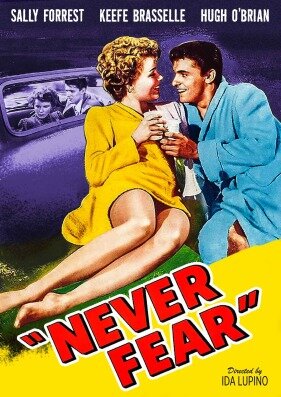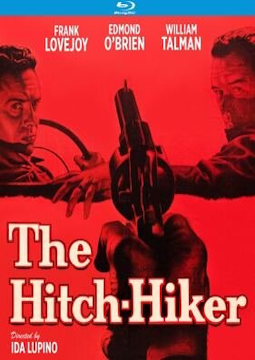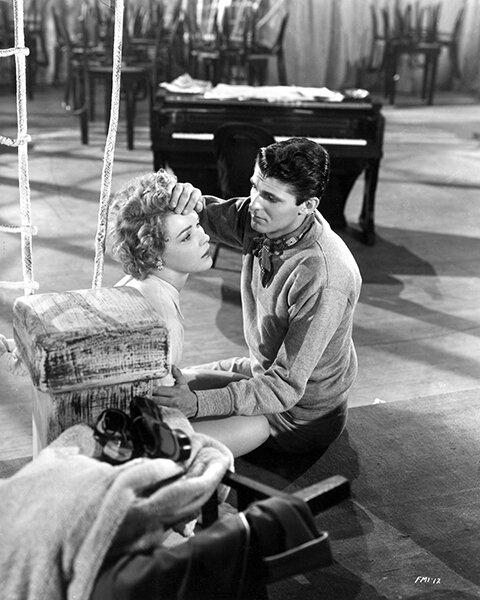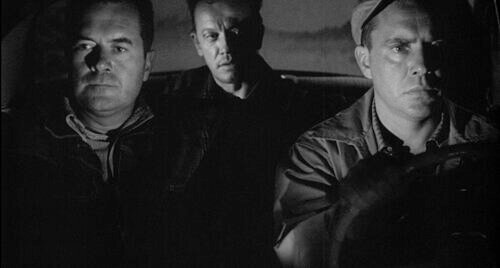GME STREAMLINE CELEBRATES WOMEN’S HISTORY MONTH WITH TWO FILMS DIRECTED BY IDA LUPINO
/In a continuation of our exclusive relationship with Kino Lorber, we now offer as Digital Site Licenses two films directed by Ida Lupino: NEVER FEAR (1949) and THE HITCH-HIKER (1953). Ida Lupino’s film and television career extended from the early 1930s through to the late 1970s. She proved to be a versatile figure in the movie industry, beginning as an actor in England as a teenager, and then later transitioning in the US to as an actor, screenwriter, producer and director. In terms of her directorial career, she worked mostly in the independent vein, establishing a production company entitled The Filmmakers (which she founded with Collier Young, her husband at the time). Directing mostly social issue feature films between 1949 and 1953, she then went on to a prolific career as an actor and director of episodes from innumerable television series, ranging from THE UNTOUCHABLES to DR. KILDAIRE. In the post-WWII era, she focused on social issue films that dramatically brought to the fore such taboo subjects as and polio (NEVER FEAR), bigamy (THE BIGAMIST), rape (OUTRAGE), out-of-wedlock birth (NOT WANTED), and serial killers (THE HITCH-HIKER).
In NEVER FEAR , Carol Williams (Sally Forrest, who also starred in Lupino’s NOT WANTED) is a beautiful young dancer whose body, and promising career, is suddenly crippled by polio. Carol’s dance partner and fiancé, Guy Richards (played by Keefe Brasselle, a featured actor in A PLACE IN THE SUN, 1951), wants to see her through her illness, but the angry, self-pitying Carol prefers to go it alone. Her father takes her to the Kabat-Kaiser Institute for rehabilitation, where she meets fellow patients like Len Randall on her tough road to recovery. Ida Lupino, who herself had been stricken with polio as an adolescent, creates in NEVER FEAR is a psychologically probing look at coping with chronic illness. The film was co-written and co-produced by Lupino and her partner (and husband) Collier Young. The movie is filmed in semi-documentary style and shot in black-and-white by Archie Stout, an ongoing collaborator on Lupino’s fllms. As the entertainment journal Variety wrote at the time of the film’s release, "As written by Ida Lupino and Collier Young, the screenplay was psychologically sound in dealing with the emotional ups and downs of polio victims, and it is equally convincing as a documentary of treatment with effective shots of physical therapy".
◊
Beyond its obvious cultural significance as the only classic film noir directed by a woman, THE HITCH-HIKER (1953) is perhaps better remembered as simply one of the most nightmarish motion pictures of the 1950s. Inspired by the true-life murder spree of Billy Cook, THE HITCH-HIKER is the tension-laden saga of two men on a camping trip (Edmond O'Brien and Frank Lovejoy) who are held captive by a homicidal drifter (William Talman).
Inspired by the true-life murder spree of serial killer Billy Cook, THE HITCH-HIKER is the tension-laden saga of two men on a camping trip (Edmond O'Brien and Frank Lovejoy) who are held captive by a homicidal drifter (William Talman). He forces them, at gunpoint, to embark on a grim joyride across the Mexican desert. Lupino visited the real serial killer at San Quentin, where he granted her exclusive rights to his story. THE HITCH-HIKER was independently produced, which allowed Lupino and ex-husband/producer Collier Young to work from a treatment by blacklisted writer Daniel Mainwaring, and tackle an incident that was too brutal for the major studios to even consider. A number of factors attracted Lupino to directing THE HITCH-HIKER, one most notably being the challenge of directing a gritty, all-male road movie in the style of her mentor Raoul Walsh, who had previously directed Lupino in ARTISTS AND MODELS (1937), THEY DRIVE BY NIGHT (1940), HIGH SIERRA (1941) and THE MAN I LOVE (1948).
With a B-movie budget of $200,000, THE HITCH-HIKER went into a five-week production schedule beginning in late June 1952. Location shooting took place around Lone Pine, California, the same surrounding location used for HIGH SIERRA. Experience cinematographer Nicholas Musuraca had shot a number of key noir films, including OUT OF THE PAST (Nicholas Ray, 1950) and CLASH BY NIGHT (Fritz Lang, 1952). From the rural setting (unusual for a Film Noir), he exaggerated the unstable scortchedness of the fierce desert climate, through his lighting of deep and gothic shadows to suggest its protagonists are as much in battle with the landscape as with their unhinged captor. The tense tone produced by the penetrating close-ups inside the car, through the framing on shadows to both block and foreground the characters is as claustrophobic and foreboding as those from any noir of the period.
Lupino’s character study of these men is compelling thanks to her ability to deconstruct their macho exterior. The captured men bicker and squabble about ways they can escape the hand of their captor, stressing that only through their commitment to one another can they both survive. For this reason, the film plays as an intense and surprisingly progressive buddy movie lacking the expected stoic glorification of heroism – more a lesson on survival in the direst of environments, as the heroes show fear, praying for the hand of law to prevail. Lupino’s focus on the captor is perhaps the most fascinating portrayal in this film, as always at work is a sad, volatile vulnerability of a damaged madman whose behavior can never be easily predicted; in scenes of raw emotional explosion, actor William Talman seems to revel in a performance that is both savage and lucid.
◊






